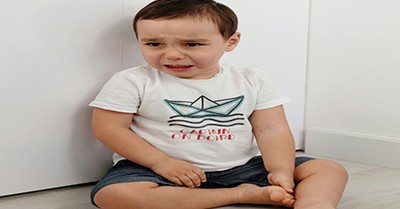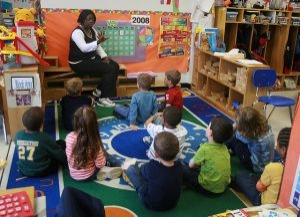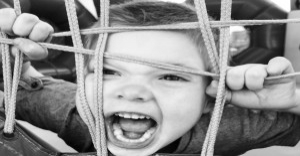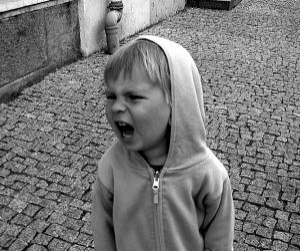Supporting toddlers aged 2–3 years with challenging behaviors requires understanding their developmental stage and using strategies tailored to their needs. Here are some effective approaches:
Strategies for Support
-
Positive Reinforcement:
- Praise and reward good behavior to encourage repetition. For example, say, "I love how you shared your toy!"
- Use small rewards like stickers or extra playtime.
-
Consistent Routines:
- Establish clear daily routines to provide a sense of security and predictability.
-
Clear Expectations:
- Set simple, clear rules and use visual aids like charts to help toddlers understand them.
-
Calm and Patient Responses:
- Stay calm when addressing challenging behaviors. Avoid yelling, as it can escalate the situation.
-
Redirection:
- Redirect their attention to a different activity when they act out. Offer engaging alternatives.
-
Teach Emotional Regulation:
- Help toddlers identify and express their emotions using tools like emotion charts or role-playing.
-
Engage in Physical Activities:
- Provide opportunities for outdoor play, dancing, or sensory activities to release energy and reduce frustration.
-
Time-In Instead of Time-Out:
- Create a safe, comforting space where the child can calm down with a trusted adult.
Understanding Triggers
Common triggers for challenging behaviors include:
- Tiredness or hunger
- Frustration or jealousy
- Feeling overwhelmed or bored
- Lack of control or overexcitement
Recognizing these triggers can help you anticipate and address behaviors before they escalate.
What Is Positive Reinforcement
Positive reinforcement is a concept from behavioral psychology that involves encouraging a desired behavior by providing a reward or pleasant consequence immediately after the behavior occurs. This increases the likelihood that the behavior will be repeated in the future.
For example:
- Praising a child for completing their homework encourages them to do it again.
- Giving a treat to a dog after it sits reinforces the sitting behavior.
Positive reinforcement can take various forms, such as:
- Social Reinforcers: Praise, recognition, or approval.
- Tangible Reinforcers: Physical rewards like toys or treats.
- Natural Reinforcers: Outcomes that naturally follow the behavior, like feeling confident after studying hard.
- Token Reinforcers: Symbols or tokens that can be exchanged for something valuable, like stickers on a reward chart.
This principle is widely used in education, parenting, and even workplace settings to shape and strengthen behaviors.
Applying Positive Reinforcement
Applying positive reinforcement in an early childhood setting can be a powerful way to encourage desired behaviors and support children's development. Here are some practical strategies:
1. Use Verbal Praise
- Acknowledge good behavior with specific and enthusiastic praise. For example, say, "Great job sharing your toys with your friend!" instead of a generic "Good job."
2. Reward Charts
- Create a visual chart where children earn stickers or tokens for positive actions, such as cleaning up toys or helping others. Once they reach a certain number, they can receive a reward like extra playtime.
3. Tangible Rewards
- Offer small, tangible rewards like stickers, stamps, or a favorite snack for consistent positive behavior. Use these sparingly to avoid over-reliance.
4. Activity-Based Rewards
- Allow children to engage in a preferred activity, such as playing with a favorite toy or choosing a story to read, as a reward for good behavior.
5. Immediate Reinforcement
- Provide reinforcement immediately after the desired behavior to strengthen the connection between the action and the reward.
6. Model Positive Behavior
- Demonstrate the behaviors you want to encourage, such as kindness or patience, and praise children when they imitate these actions.
7. Create a Positive Environment
- Foster a supportive and encouraging atmosphere where children feel safe and valued. This helps them associate positive reinforcement with a sense of belonging.
8. Celebrate Milestones
- Recognize and celebrate achievements, both big and small, to motivate children to continue their efforts.
Examples Of Clear and Patient Responses
Here are some examples of clear and patient responses, especially useful in early childhood settings:
1. During a Tantrum
-
Clear: "I see you're upset. Let's take deep breaths together to calm down."
-
Patient: Stay calm and wait for the child to settle before discussing the situation.
2. When Giving Instructions
-
Clear: "Please put the blocks in the basket and then sit on the mat."
-
Patient: If the child doesn't respond immediately, gently repeat the instruction without frustration.
3. Addressing Misbehavior
-
Clear: "Hitting is not okay. We use gentle hands with our friends."
-
Patient: Acknowledge their feelings and redirect them to a positive action, like offering a toy.
4. Encouraging Participation
-
Clear: "It's time to clean up. Can you help me put the books on the shelf?"
-
Patient: Allow the child time to process and respond, offering encouragement if needed.
5. Handling Mistakes
-
Clear: "It's okay to spill your juice. Let's clean it up together."
-
Patient: Avoid showing frustration and use the moment as a teaching opportunity.
Examples Of Redirection
Here are some practical examples of redirection, especially useful in early childhood settings:
1. Redirecting Unsafe Behavior
- If a child is about to touch a fragile object, gently guide them away and say, "Let's play with this soft ball instead."
2. Redirecting Aggression
- If a child is hitting another, calmly intervene and say, "We use gentle hands. Would you like to build a tower with these blocks?"
3. Redirecting Tantrums
- If a child is upset and throwing toys, acknowledge their feelings: "I see you're upset. Let's take a break and draw a picture together."
4. Redirecting Inappropriate Focus
- If a child is fixated on a non-productive activity, like scribbling on walls, offer an alternative: "Walls are not for drawing. Here's some paper and crayons for your art."
5. Redirecting Disruptive Behavior
- If a child is shouting during storytime, redirect their energy: "Can you help me turn the pages of the book?"
What Is Time In Instead of Time Out
A Time-In is a positive discipline strategy that focuses on connection and emotional regulation, as opposed to a Time-Out, which isolates the child as a form of punishment. Here's how they differ:
Time-Out
-
The child is removed from the situation and placed in isolation (e.g., a corner or separate room).
-
The goal is to stop undesirable behavior by withholding attention.
-
It can sometimes make children feel rejected or confused.
Time-In
-
The child is guided to a safe, calming space near a caregiver.
-
The caregiver stays present, offering comfort and helping the child process their emotions.
-
The focus is on teaching emotional regulation and problem-solving skills.
For example, if a child is having a tantrum, instead of sending them to a time-out, you might say, "I see you're upset. Let's sit together and take some deep breaths." This approach helps the child feel supported while learning to manage their feelings.
Further Reading
Supporting Children With Challenging Behaviour
Talking To Parents About Their Child's Behaviour Issues
Behaviour Management Plans In Childcare
Child Behaviour: Transitions
Redirecting Children's Behaviour
Behaviourism Theory in Early Childhood Education
Descriptive Words For Children's Behaviour







 Working as a childcare professional can be a challenge especially when dealing with behavioural problems which may arise. The techniques we use when dealing with
Working as a childcare professional can be a challenge especially when dealing with behavioural problems which may arise. The techniques we use when dealing with There are different types of behaviour that children can display and sometimes it can be hard to manage, especially if a child is having behavioural
There are different types of behaviour that children can display and sometimes it can be hard to manage, especially if a child is having behavioural As a parent, your behavioural expectations of your child can be higher than what is actually developmentally appropriate for your child's age.
As a parent, your behavioural expectations of your child can be higher than what is actually developmentally appropriate for your child's age.
 As Educators, there will be many instances where you will need to write about a child's behaviour. For a behaviour management plan, assessments, half-yearly or
As Educators, there will be many instances where you will need to write about a child's behaviour. For a behaviour management plan, assessments, half-yearly or As Educators when communicating with Parents (through verbal or non-verbal communication), there will be times where we need to discuss issues or concerns that may
As Educators when communicating with Parents (through verbal or non-verbal communication), there will be times where we need to discuss issues or concerns that may Challenging Behaviour is when a child does something that hurts themselves and/or other people.
Challenging Behaviour is when a child does something that hurts themselves and/or other people.
 As part of your child's development it is normal for your child to have anxiety and fears. A baby commonly shows a fearful sign to
As part of your child's development it is normal for your child to have anxiety and fears. A baby commonly shows a fearful sign to It's always difficult to bring up behavioural issues with parents, it can be nerve wrecking to tell a parent that their child misbehaves but that
It's always difficult to bring up behavioural issues with parents, it can be nerve wrecking to tell a parent that their child misbehaves but that All children deal with anger on a daily basis. Thinking about it as a child, there is a lot to be angry about. Elder people
All children deal with anger on a daily basis. Thinking about it as a child, there is a lot to be angry about. Elder people It is important to understand that your child behaviour problems could not just be from attention seeking. There are many factors to take into consideration
It is important to understand that your child behaviour problems could not just be from attention seeking. There are many factors to take into consideration


